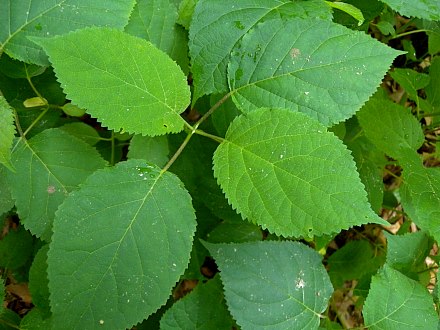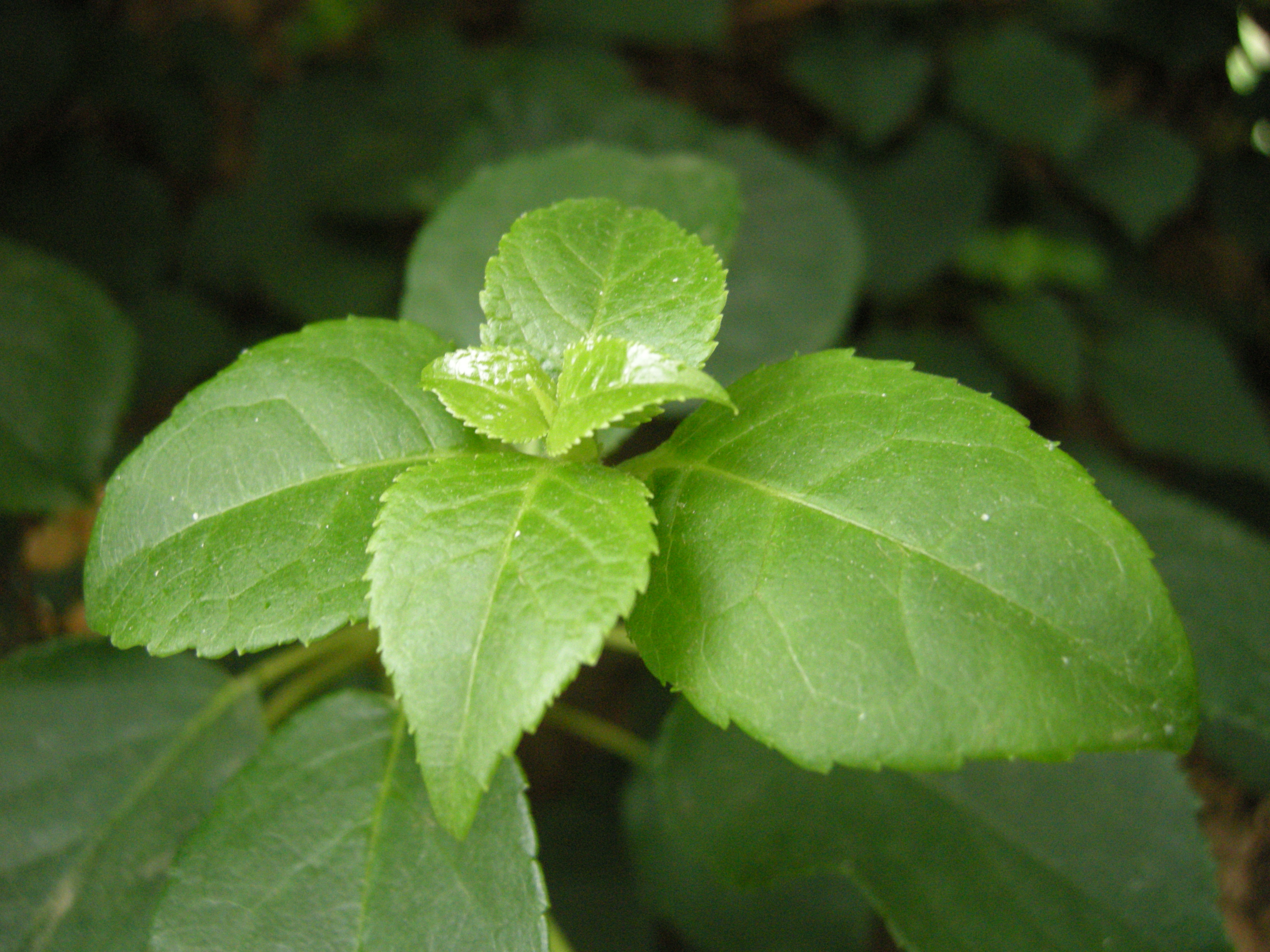The Hydrangea Leaf: A Closer Look
The Hydrangea Leaf: A Closer Look
Hydrangeas are some of the most popular flowering shrubs in the world, and for good reason. They come in a wide variety of colors, sizes, and shapes, and they can add a touch of elegance to any garden. But what many people don't know is that hydrangea leaves are just as fascinating as their flowers.
In this blog post, we'll take a closer look at hydrangea leaves. We'll talk about their anatomy, their different shapes and sizes, and the factors that affect their color. We'll also discuss some common hydrangea leaf problems and how to deal with them.
Anatomy of a Hydrangea Leaf
Hydrangea leaves are simple, meaning they have a single blade. They are arranged opposite each other on the stem, and they have a petiole, or leaf stalk. The petiole connects the leaf blade to the stem.
The leaf blade of a hydrangea is typically oval or oblong in shape. It has a smooth, glossy surface and a serrated edge. The serrations are small, sharp teeth that run along the edge of the leaf blade.
The underside of a hydrangea leaf is usually lighter in color than the topside. It may also have a slightly hairy or velvety texture.
Different Shape and Sizes of Hydrangea Leaves
The shape and size of hydrangea leaves can vary depending on the species and variety of hydrangea. For example, the leaves of bigleaf hydrangea (Hydrangea macrophylla) are typically larger than the leaves of oakleaf hydrangea (Hydrangea quercifolia).
In general, hydrangea leaves are relatively large. They can be anywhere from 2 to 6 inches long and 1 to 3 inches wide.
Factors Affecting Hydrangea Leaf Color
The color of hydrangea leaves can vary depending on a number of factors, including the type of hydrangea, the soil pH, and the amount of sunlight the plant receives.
In general, hydrangeas with blue flowers have leaves that are more acidic, while hydrangeas with pink flowers have leaves that are more alkaline. This is because the color of hydrangea flowers is affected by the amount of aluminum in the soil. When the soil is acidic, aluminum is more soluble and can be absorbed by the plant. This causes the flowers to turn blue.
The amount of sunlight a hydrangea plant receives can also affect the color of its leaves. Hydrangeas that receive more sunlight will typically have darker green leaves.
Common Hydrangea Leaf Problems
Hydrangeas are generally hardy plants, but they can be susceptible to a few common leaf problems.
One common problem is leaf scorch. Leaf scorch is caused by too much sunlight or heat. It can cause the leaves to turn brown or yellow and eventually drop off.
Another common problem is leaf spot. Leaf spot is caused by a fungus. It can cause small, dark spots to appear on the leaves. These spots can eventually enlarge and cause the leaves to fall off.
If you notice any problems with your hydrangea leaves, it's important to take action to correct the problem. This may involve adjusting the amount of sunlight the plant receives, watering the plant more often, or applying a fungicide.
Conclusion
Hydrangea leaves are an important part of these beautiful plants. They provide shade for the flowers, help the plant to photosynthesize, and add to the overall aesthetic appeal of the plant. By understanding the anatomy, shape, and color of hydrangea leaves, you can better care for your hydrangea plants and enjoy their beauty for years to come.
Hydrangea leaves are a beautiful sight to behold, with their large, serrated edges and deep green color. But did you know that hydrangea leaves can also be used for medicinal purposes? In fact, hydrangea leaf extract has been shown to have a number of health benefits, including:
- Diuretic effect: Hydrangea leaf extract can help to increase urination, which can help to flush out toxins and excess fluids from the body. This can be beneficial for people who are trying to lose weight or who have a condition that causes fluid retention, such as heart failure or kidney disease.
- Anti-inflammatory effect: Hydrangea leaf extract has also been shown to have anti-inflammatory properties. This can be beneficial for people who suffer from chronic inflammatory conditions, such as arthritis or asthma.
- Antioxidant effect: Hydrangea leaf extract is a rich source of antioxidants, which can help to protect cells from damage caused by free radicals. This can help to reduce the risk of developing chronic diseases, such as cancer and heart disease.
If you are interested in learning more about the health benefits of hydrangea leaf extract, I recommend visiting . This website provides a wealth of information on the topic, including scientific studies, articles, and recipes.
FAQ of hydrangea leaf
- What are the different types of hydrangea leaves?
There are several different types of hydrangea leaves, each with its own unique characteristics. Some of the most common types include:
* Bigleaf hydrangea leaves are large and oval-shaped, with serrated edges. They are typically green in color, but can turn pink or blue depending on the soil pH.
* Smooth hydrangea leaves are smaller and more rounded than bigleaf hydrangea leaves. They are also smooth-edged and typically green in color.
* Panicle hydrangea leaves are long and narrow, with serrated edges. They are typically green in color, but can turn yellow or red in the fall.
* Oakleaf hydrangea leaves are large and lobed, with serrated edges. They are typically green in color, but can turn red in the fall.
* Climbing hydrangea leaves are small and oval-shaped, with smooth edges. They are typically green in color, but can turn yellow or red in the fall.
- Why are my hydrangea leaves turning brown?
There are a few possible reasons why your hydrangea leaves might be turning brown. Some of the most common causes include:
* Water stress: Hydrangeas need regular water, especially during hot, dry weather. If your hydrangeas are not getting enough water, their leaves may start to turn brown.
* Overwatering: Too much water can also cause hydrangea leaves to turn brown. If your hydrangeas are sitting in waterlogged soil, their roots may start to rot, which can lead to leaf browning.
* Nutrient deficiency: Hydrangeas need a variety of nutrients to stay healthy. If your hydrangeas are not getting enough nutrients, their leaves may start to turn brown.
* Pests or diseases: Hydrangeas can be susceptible to a number of pests and diseases, which can also cause leaf browning. If you suspect that your hydrangeas may have a pest or disease problem, it is important to identify the problem and treat it promptly.
- How do I prevent my hydrangea leaves from turning brown?
There are a few things you can do to prevent your hydrangea leaves from turning brown:
* Water your hydrangeas regularly, especially during hot, dry weather.
* Water your hydrangeas deeply, so that the water reaches the roots.
* Avoid overwatering your hydrangeas.
* Fertilize your hydrangeas regularly with a balanced fertilizer.
* Inspect your hydrangeas regularly for pests and diseases.
* Treat any pest or disease problems promptly.
- How do I make my hydrangea leaves bigger?
There are a few things you can do to make your hydrangea leaves bigger:
* Provide your hydrangeas with plenty of sunlight.
* Water your hydrangeas regularly, especially during hot, dry weather.
* Fertilize your hydrangeas regularly with a balanced fertilizer.
* Prune your hydrangeas regularly to remove dead or diseased wood and to encourage new growth.
* Choose a hydrangea variety that is known for producing large leaves.
- How do I get my hydrangea leaves to change color?
The color of hydrangea leaves can be affected by a number of factors, including the type of hydrangea, the soil pH, and the amount of sunlight the plant receives.
- Bigleaf hydrangeas typically produce blue flowers when the soil pH is acidic. However, the flowers can also turn pink or purple when the soil pH is alkaline.
- Smooth hydrangeas typically produce white flowers. However, the flowers can also turn pink or purple when the soil pH is alkaline.
- Panicle hydrangeas typically produce white or pink flowers. However, the flowers can also turn red when the soil pH is alkaline.
- Oakleaf hydrangeas typically produce white flowers. However, the flowers can also turn pink or purple when the soil pH is alkaline.
- Climbing hydrangeas typically produce white flowers. However, the flowers can also turn pink or purple when the soil pH is alkaline.
To change the color of your hydrangea leaves, you can adjust the soil pH. If you want your hydrangeas to produce blue flowers, you will need to lower the soil pH. If you want your hydrangeas to produce pink or purple flowers, you will need to raise the soil pH.
Image of hydrangea leaf
5 different images of hydrangea leaf from Pinterest:
- Hydrangea macrophylla leaf. This type of hydrangea leaf is large and heart-shaped, with serrated edges. It is typically green in color, but can turn pink or blue depending on the acidity of the soil.

- Hydrangea paniculata leaf. This type of hydrangea leaf is smaller and more oval in shape, with smooth edges. It is typically green in color, but can turn red in the fall.

- Hydrangea arborescens leaf. This type of hydrangea leaf is small and round, with serrated edges. It is typically green in color, but can turn yellow in the fall.

- Hydrangea serrata leaf. This type of hydrangea leaf is small and serrated, with a pointed tip. It is typically green in color, but can turn red in the fall.
- Hydrangea petiolaris leaf. This type of hydrangea leaf is small and oval in shape, with smooth edges. It is typically green in color, but can turn red in the fall.


Post a Comment for "The Hydrangea Leaf: A Closer Look"